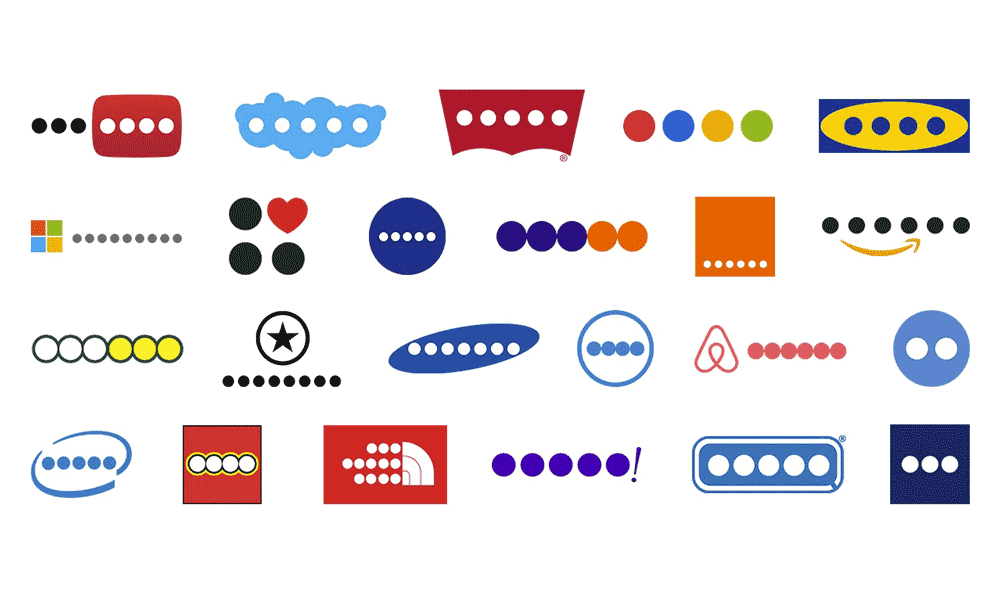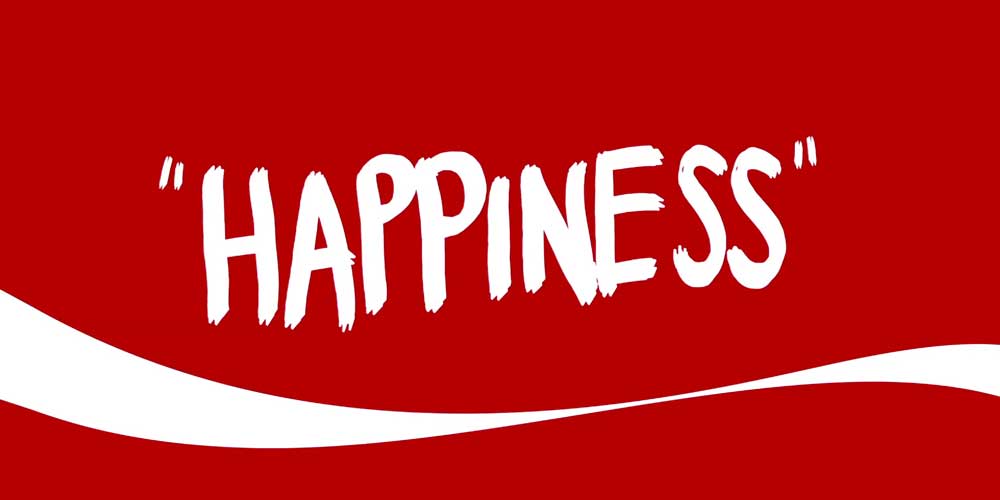The Importance of a Logo Design to Brand Identity
You're walking down the street when you spot two coffee shops, one on each side. You're a caffeine lover, but this is the first time you've seen either of these places. How do you decide which one to go into? Chances are, your eyes will land on the logos. The one that's more appealing, memorable, and communicates something about what the coffee shop stands for will probably win your patronage.
Welcome to “The Importance of a Logo Design to Brand Identity,” where we explore the significant role that logo design plays in the perception and success of a brand. A logo is more than a pretty business card or website image. It's a powerful tool that can communicate your brand's values, tell your brand's story, and ultimately influence customer decisions.
Did you know that according to a study by the branding agency Siegel+Gale, logos that are “familiar” or “simple” are preferred by consumers 80% of the time? Or is the average person exposed to nearly 5,000 brand logos daily in advertising, but only the most effective ones stick in our minds? It's these compelling logos that help to build the vital connection between a brand and its audience.
Let's dive into the fascinating world of logo design and learn how it can make or break your brand identity. Sit tight, grab that coffee (maybe from a shop with a logo that caught your eye?), and let's uncover the secrets to a captivating logo design.
Psychology & Importance of a Logo

It's fascinating how our human nature is wired to respond so strongly to visual stimuli. As visual creatures, we have this incredible ability to process images much faster than text. Our brains have a built-in superpower for decoding visual information in a flash.
This is where a logo's true power and significance come into play. Think of it as a magical symbol that acts as a visual cue, instantly grabbing our attention and triggering a cascade of recognition and emotions within us. It's like a secret code that speaks directly to our subconscious minds.
Psychology plays a crucial role here. When designed with an understanding of psychological principles, logos can tap into our deep-seated emotions and shape our perceptions as consumers. They have the potential to evoke specific feelings and associations that connect us to a brand on a much deeper level.
When we encounter a well-crafted logo, it's not just a simple image we're looking at. It's a carefully constructed masterpiece that conveys a whole world of meaning and values. It's like a silent messenger that whispers to us, “This brand is trustworthy,” or “This brand is innovative and forward-thinking.”
And guess what? We often don't even realise the impact a logo has on us. It works its magic subtly, influencing our decision-making process without us consciously noticing it. That's the true power of a well-designed logo—it shapes our perceptions, affects our emotions, and ultimately helps build strong connections between consumers and brands.
1.1 The Impact of Colours and Shapes:
Colours profoundly impact human emotions and can evoke specific feelings and associations. A well-chosen colour palette in a logo can convey trustworthiness, excitement, sophistication, or playfulness, depending on the desired brand image. Similarly, the shape and form of a logo can communicate various attributes, such as strength, elegance, or innovation.
1.2 The Power of Simplicity:
Simplicity is a crucial element of effective logo design. Research has shown that simple, clean logos are more memorable and have a higher recall rate than complex designs. A cluttered or confusing logo can create cognitive overload, making it difficult for consumers to connect with the brand.
1.3 Building Trust and Credibility:
A well-crafted logo not only captures attention but also establishes credibility for a brand. Consumers associate professionalism, reliability, and quality with a solid visual identity. A logo is a visual shorthand, allowing customers to judge a brand's reputation and authenticity quickly.
Enhancing Brand Recognition

When people think about a brand, they often picture its logo. It's like a visual anchor that grabs their attention and sparks recognition. It's incredible how a well-crafted logo can evoke emotions, trigger memories, and even convey the values and essence of a brand.
Imagine strolling through a bustling shopping mall or a sea of online websites. Everywhere you look, countless brands are vying for your attention. But amid this chaos, a logo shines bright and catches your eye. It's like a familiar face in the crowd that instantly draws you in.
A logo becomes the face of a brand, representing its identity and character. It's not just about the products or services a brand offers; it's about the story it tells, the experiences it promises, and the values it upholds. A well-designed logo can communicate all of this in a single glance.
Think about iconic logos like the golden arches of McDonald's or the swoosh of Nike. These logos have become synonymous with their respective brands, symbolising their products, the entire customer experience, and the values they stand for. That's the power of a great logo.
In today's competitive market, where new brands are popping up left and right, having a solid logo is more important than ever. It helps a brand differentiate itself from the competition and leave a lasting impression on consumers. It's like a signature that sets a brand apart and makes it easily recognisable.
2.1 Standing Out in the Crowd:
A distinct and memorable logo helps a brand stand out in a competitive landscape. With thousands of messages bombarding consumers daily, a logo is a beacon that guides customers toward a familiar and trusted brand.
2.2 The Power of Repetition:
Consistency and repetition are vital for brand recognition. A well-placed logo across various touchpoints—websites, packaging, social media profiles, and advertisements—reinforces brand identity and increases the chances of being remembered. The more frequently consumers encounter a logo, the stronger the association becomes.
2.3 Logo Evolution and Legacy:
Iconic logos often have a rich history and legacy attached to them. Over time, a logo can symbolise heritage, tradition, and loyalty. Brands like Coca-Cola, Nike, and Apple have successfully evolved their logos over the years while retaining vital visual elements and maintaining a solid connection with their loyal customer base.
Establishing Emotional Connections

When building a solid bond between a brand and its consumers, emotional connections are the secret ingredient that makes all the difference. That intangible, almost magical element transcends mere transactions and transforms customers into passionate advocates.
Imagine this: you stumble upon a logo that instantly catches your eye. It's not just a visually appealing design; it speaks to you on a deeper level. It may trigger a sense of excitement, joy, or even nostalgia. That's the power of a strategically designed logo that taps into your emotions.
Logos can remarkably encapsulate a brand's essence and communicate its values and personality in a compact symbol. When crafted with care and intention, logos become more than just a visual representation; they become a gateway to an emotional experience.
Think about iconic logos like Apple's bitten apple or Nike's Swoosh. They have become ingrained in our collective consciousness and evoke various emotions and associations. These logos have transcended their physical forms to symbolise innovation, creativity, and aspiration. They connect with consumers on a profound level and form lasting impressions.
When consumers connect emotionally with a logo, they are more likely to develop a sense of trust, loyalty, and attachment to the brand it represents. It's no longer just about a product or service; it becomes a part of their identity, a symbol they proudly associate themselves with. They become brand ambassadors, eagerly sharing their positive experiences and influencing others to join the tribe.
But creating such emotional connections through a logo isn't a mere stroke of luck; it's a strategic process. Designers meticulously consider colour palettes, typography, shapes, and imagery to evoke specific emotions and resonate with the target audience. They aim to create a visual narrative that tells a story, ignites curiosity, and profoundly stirs emotions.
The beauty of emotional branding is that it goes beyond fleeting trends and fads. It establishes a lasting relationship between the brand and its consumers, transcending the boundaries of time and space. Even as trends change, a well-crafted logo can stand the test of time, eliciting the same emotions and connections years later.
3.1 Creating Brand Personality:
A logo plays a vital role in establishing a brand's personality. It can communicate traits such as friendliness, luxury, innovation, or reliability.
3.2 Evoking Emotional Responses:
A logo can elicit specific emotional responses from consumers by incorporating elements like colour psychology, typography, and imagery. For example, a warm colour palette and a friendly font can evoke trust and approachability, while a sleek, minimalist design may convey a sense of sophistication and modernity.
3.3 Building Trust and Loyalty:
When consumers connect emotionally with a brand, they are more likely to develop a sense of trust and loyalty. A well-crafted logo is a visual cue that triggers positive associations and memories, reinforcing the brand's and its customers' emotional bond. This bond translates into long-term relationships and repeat business.
Driving Business Growth

First, an effective logo can give a company a competitive edge in the market. Think about it—when you see a logo that stands out and resonates with you, you're more likely to remember that company and choose them over its competitors. That means increased market share for the company with the eye-catching logo. It's like having a secret weapon that helps you win the battle for customers.
But it doesn't stop there. A well-designed logo can be a magnet for customer acquisition. When people come across a logo that catches their attention and sparks their interest, they're more inclined to explore the company behind it. It's like an open invitation to discover what the brand offers. This can lead to a steady stream of new customers eager to engage with the business and become loyal fans.
Now, let's talk numbers. An effective logo has the potential to boost revenue generation. Customers who perceive a company as trustworthy, reliable, and professional are likelier to do business with them. And a carefully crafted logo can convey all those qualities in one impactful visual representation. An engaging logo can help companies attract and retain customers, increasing sales and revenue.
There's even more to the story! A logo can communicate a company's values, mission, and unique selling proposition. When a logo effectively captures the essence of a brand and aligns with its core message, it becomes a powerful symbol that connects with people on an emotional level. Customers who resonate with a company's values are likelier to become loyal brand advocates, spreading the word and driving even more business growth.
4.1 Memorable and Shareable:
A visually appealing and memorable logo is more likely to be shared and discussed by consumers. In the era of social media and viral content, a symbol that captures attention and resonates with viewers can lead to organic brand exposure and reach a broader audience.
4.2 Differentiation and Competitive Advantage:
In a saturated market, a logo can serve as a differentiator, setting a brand apart from its competitors. A unique and compelling logo can communicate the brand's value proposition, helping it to carve out a distinctive position in the minds of consumers. This differentiation can translate into a competitive advantage and attract customers who align with the brand's values.
4.3 Brand Extension and Diversification:
A strong logo creates a solid foundation for brand extension and diversification. When a brand expands its product or service offerings, a recognisable logo provides a sense of continuity and reassurance to existing customers. It enables a smooth transition into new markets and allows the brand to leverage its existing equity and reputation.
Conclusion
The importance of a logo in today's branding landscape cannot be overstated. A well-designed logo goes beyond visual aesthetics; it is a powerful tool that taps into human psychology, enhances brand recognition, establishes emotional connections, and drives business growth. From evoking emotions and building trust to differentiating a brand from its competitors, a logo is a cornerstone of an effective branding strategy.
To harness the full potential of a logo, businesses must invest in professional logo design that aligns with their brand identity and resonates with their target audience. By creating a logo that embodies the essence of their brand and effectively communicates their unique value proposition, businesses can cultivate strong brand loyalty, gain a competitive edge, and leave a lasting impression on consumers' minds. Remember, in the ever-evolving world of branding, a powerful logo is not just a visual symbol—it is the face and essence of a brand.

I read an insightful article about the significance of logos. It emphasized that a well-designed logo is a visual cornerstone of a brand, representing its identity. The article also highlighted the importance of simplicity, versatility, and memorable design in creating an impactful brand presence. It’s a great resource for businesses and designers looking to establish a lasting and effective brand image.